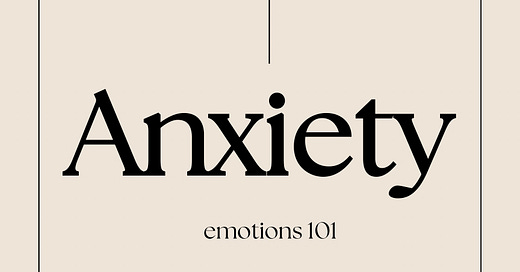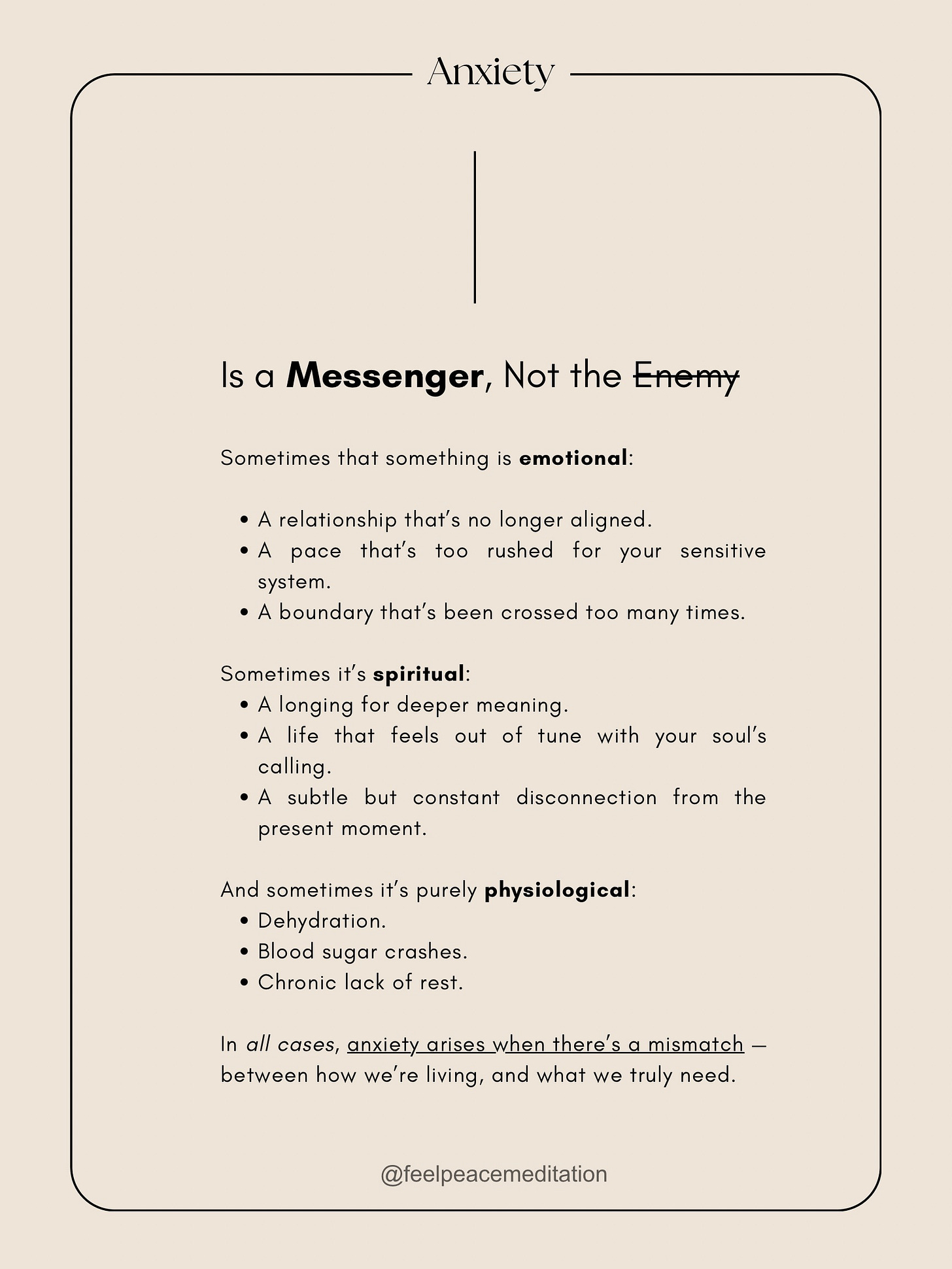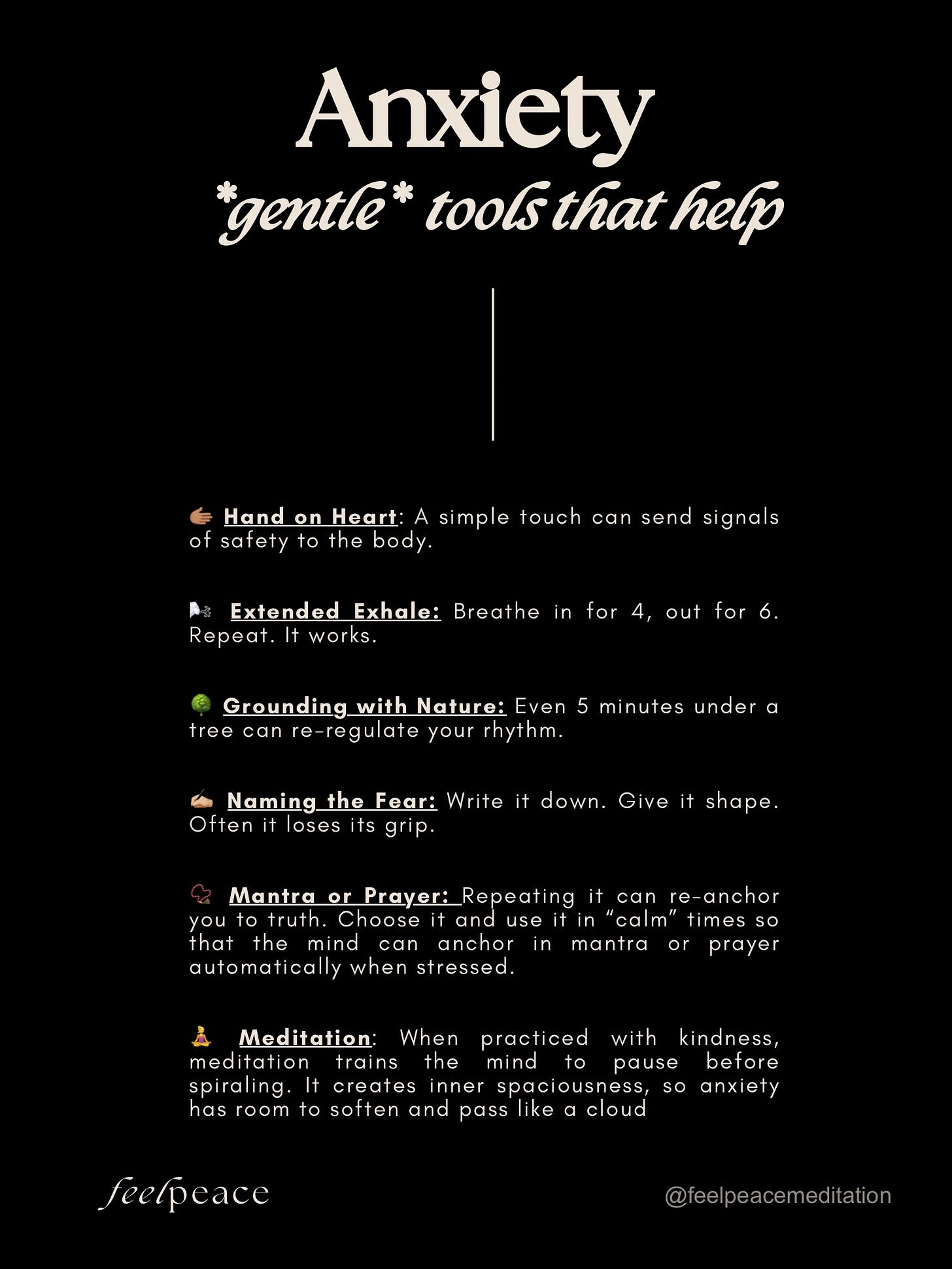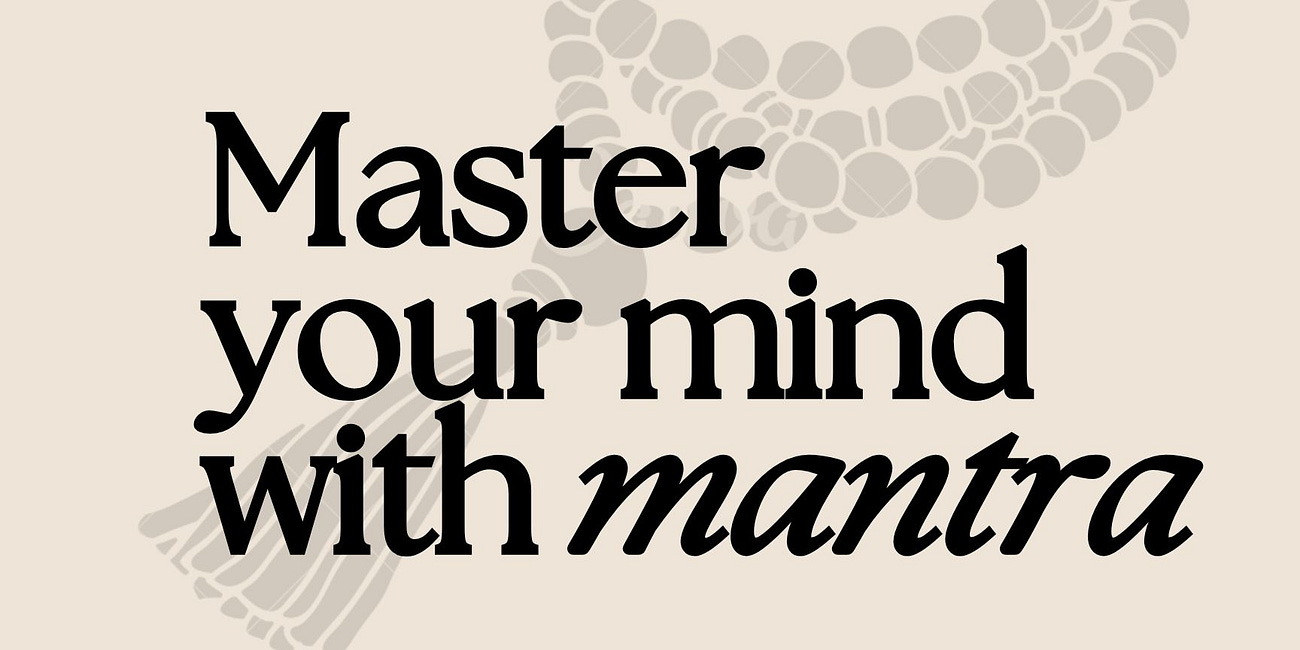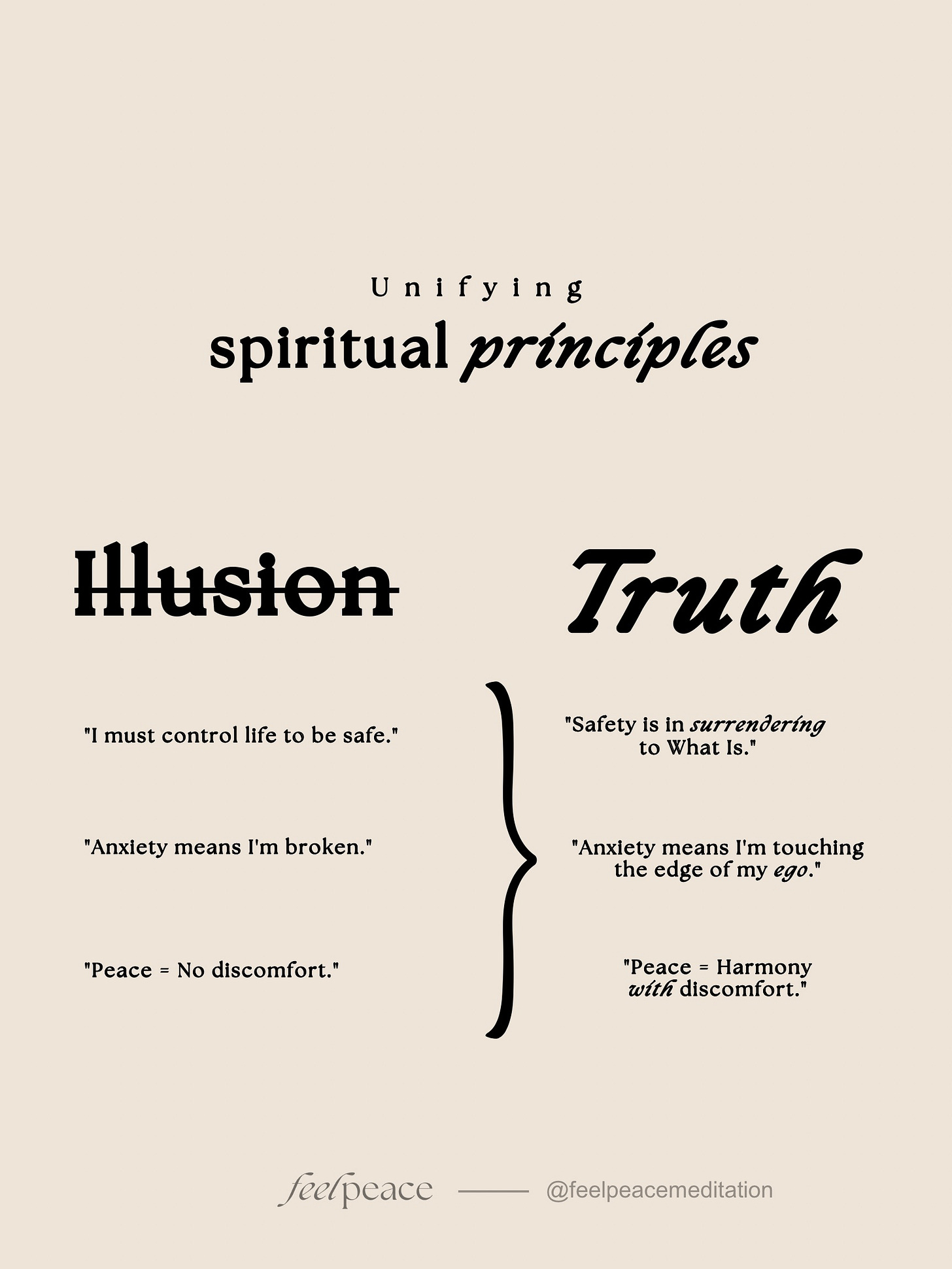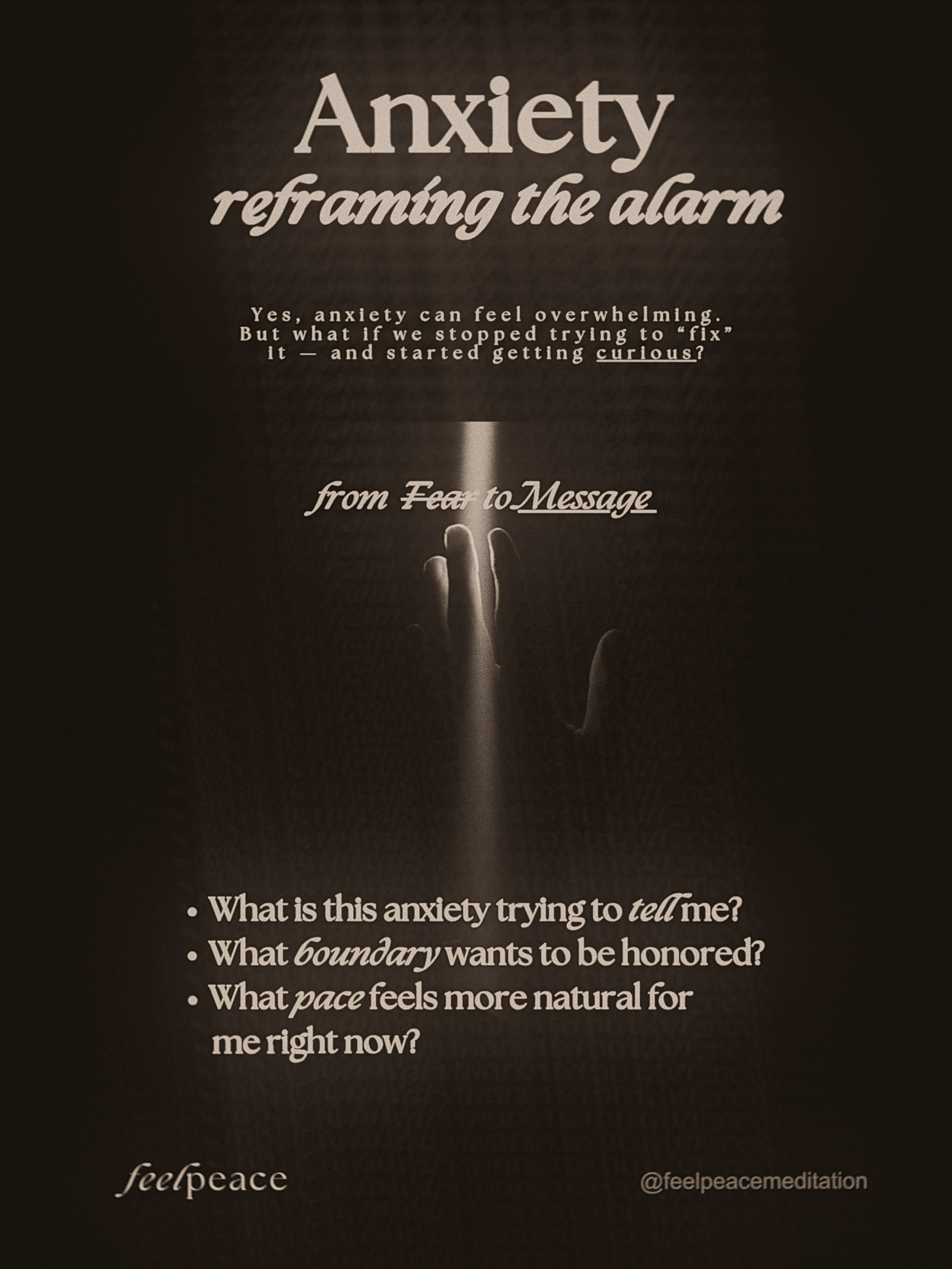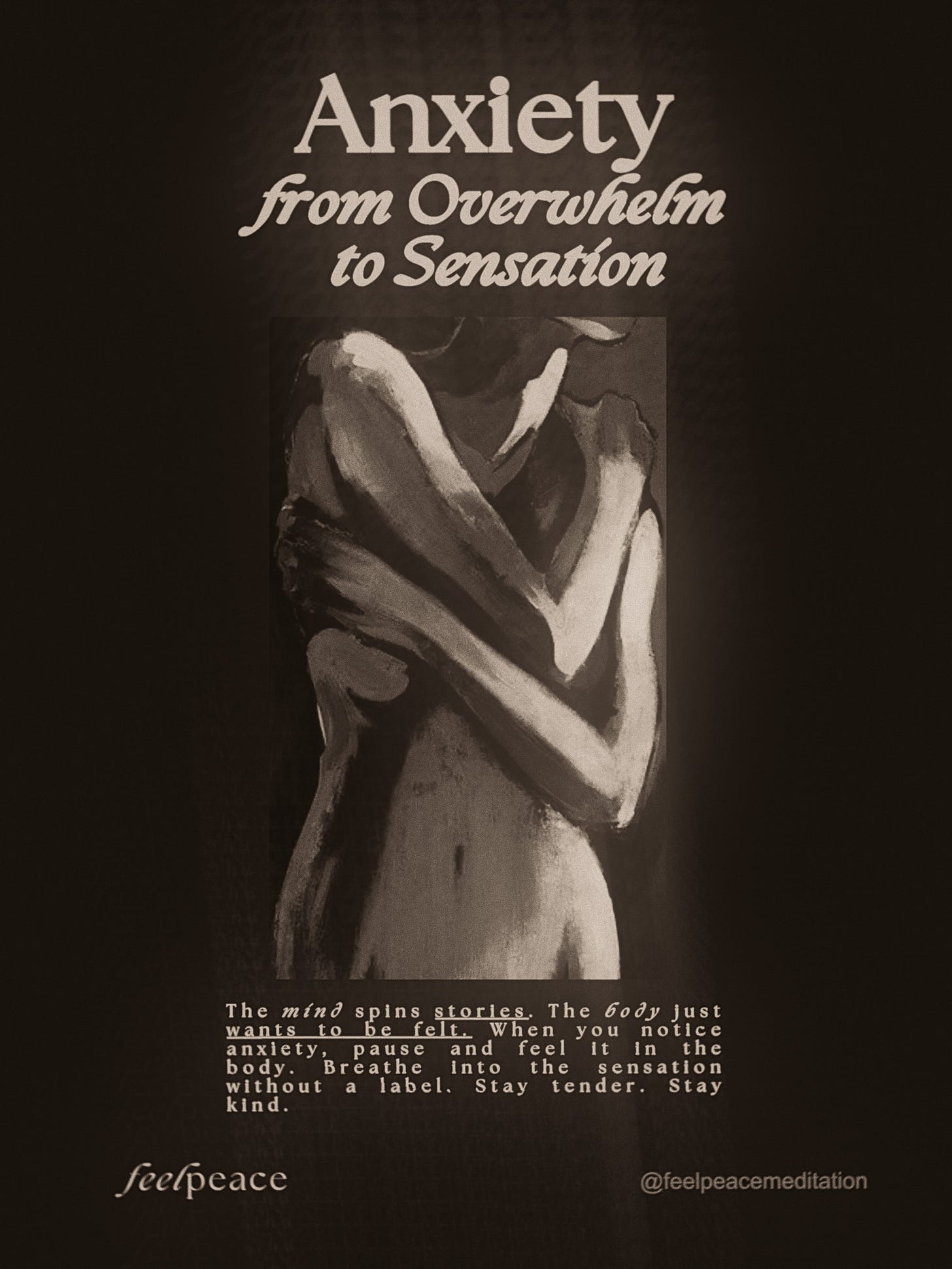There’s something strange about anxiety.
It can show up in the middle of joy, during the quiet of meditation, in the middle of a dinner with friends. It can hijack your breath, stir your chest, keep you alert even when there’s no real danger. It arrives uninvited — but not without reason.
Over time, many of us start to think of anxiety as something to battle, fix, suppress, or hide. We try to “manage it” with strategies or simply push through and hope it quiets down. But what if we’ve misunderstood its role altogether?
What if anxiety isn’t a malfunction…
but a message?
What if, underneath the chaos, anxiety is the body’s way of praying — asking, in its own language, for safety, stillness, and slowness in a world that’s moving too fast?
The Nervous System Wasn’t Built for This
Our ancestors lived in tune with the earth. Their lives were filled with natural rhythms: sunrise and sunset, hunger and fullness, movement and rest. The sympathetic nervous system — the part of us responsible for fight or flight — was activated only in actual life-threatening situations.
Fast forward to today: the dangers have changed, but our systems haven’t.
We don’t face lions or famine, but we do face relentless notifications, performance pressures, overstimulation, and the unspoken demand to always be “on.”
When the world around us moves faster than our inner rhythm, our bodies react — and anxiety steps in like a faulty fire alarm, blaring when there’s no fire, simply because the system is overloaded.
In that light, anxiety is not weakness. It’s our internal compass waving a red flag, saying:
“I can’t keep up.”
“Please slow down.”
“Something doesn’t feel safe.”
Anxiety Is a Messenger, Not the Enemy
I used to think anxiety was a flaw in my wiring — something to silence or “work through.” But now, I see it as a very persistent, often clumsy, protector. Anxious thoughts often rise when something inside us is being ignored.
Sometimes that something is emotional:
A relationship that’s no longer aligned.
A pace that’s too rushed for your sensitive system.
A boundary that’s been crossed too many times.
Sometimes it’s spiritual:
A longing for deeper meaning.
A life that feels out of tune with your soul’s calling.
A subtle but constant disconnection from the present moment.
And sometimes it’s purely physiological:
Dehydration.
Blood sugar crashes.
Chronic lack of rest.
In all cases, anxiety arises when there’s a mismatch — between how we’re living, and what we truly need.
What Helps —Tools for a Gentle Reset
There’s no one-size-fits-all when it comes to healing, but there are gentle tools that help bring the body and mind back to safety. These are not meant to “get rid” of anxiety, but to create a more compassionate relationship with it.
🌬️ 1. Extend the Exhale
The nervous system responds directly to your breath. Try inhaling for 4 counts and exhaling for 6. Do this for a few minutes. The longer exhale helps signal safety to the vagus nerve.
🫱🏽 2. Touch the Body
Place your hand over your heart or gently on your belly. These are grounding zones. Touch releases oxytocin — the body’s safety hormone — and gently slows the nervous system.
🪵 3. Return to the Senses
Anxiety lives in the future. Safety lives in the now. Use your five senses: drink warm tea, listen to a calming sound, touch a soft texture, smell something earthy. Let your body remember where it is.
✍🏼 4. Name It Kindly
When the storm rises, try writing out your fears. Not to indulge them, but to see them clearly. As the saying goes, “You have to name it to tame it.”
🕯️ 5. Repeat a Phrase or Mantra *I wrote the whole separate post on the subject, check it below *
Simple words carry power. A few favorites from different traditions:
• “This too shall pass.”
• “The Lord is my Shepherd...” (Psalm 23)
• “Om Shanti Shanti Shanti.” (A Sanskrit invocation of peace)
• “Om Mani Padme Hum.” (Buddhist compassion mantra)
🧘♀️ 6. Meditate
When practiced with kindness, meditation trains the mind to pause before spiraling. It creates inner spaciousness, so anxiety has room to soften and pass like a cloud.
These tools don’t need to be perfect. You don’t need to feel 100% better right away. You only need to offer your body the message: “You’re safe now. You can soften.”
Master your mind with the Mantra
We live in a time of quick fixes, endless scrolling, and high-speed everything. But underneath the chaos, many of us are quietly yearning for something slower, truer, and more grounding. The world offers countless distractions — but very few anchors.
The Soul Message Hidden in the Symptoms
There’s a deeper layer, too — one that goes beyond tools and techniques.
From a spiritual lens, anxiety often signals a mismatch between the soul and the schedule. Between what your inner life craves and what your outer life demands.
☸️In the Buddhist tradition, anxiety is sometimes seen as a form of dukkha — the subtle suffering of disconnection.
✝️ In Christian mysticism, it’s considered a spiritual restlessness — a longing to return to the peace that “surpasses understanding.”
🌬️In somatic healing and polyvagal theory, anxiety is the nervous system’s natural cry for regulation and belonging.
Whatever lens you use, one thing is clear:
The answer is not always “do more.”Sometimes, the answer is “do less.”
When Anxiety Arises, Try Asking:
• What is this part of me trying to protect?
• Where have I abandoned my needs in order to perform or please?
• What would it look like to honor the message beneath the symptoms?
You might be surprised at what you hear.
A Gentle Ending, or a New Beginning
I don’t believe anxiety is here to ruin us.
I believe it’s trying to reroute us — back to what matters.
Back to gentleness.
Back to wholeness.
Back to truth.
So the next time anxiety rises, instead of fighting it, what if you placed a hand over your heart and whispered:
“I’m listening now.”
“You’re safe with me.”
That may be all the prayer your body needs. And in that pause — in that listening — you may discover that the world doesn’t need you to move faster. It needs you to move truer.
✨ Resources & Further Reading / Listening:
• Dr. Gabor Maté — “When the Body Says No” (on trauma and stored anxiety)
• Deb Dana — Polyvagal theory tools for safety & regulation
• Eknath Easwaran’s Mantram Handbook — for spiritual anchoring
• Tara Brach — meditations for anxiety and radical compassion
• Internal Family Systems (IFS) — on working with inner protectors like anxiety
If this resonated, feel free to share or reply with your own experience. You are not alone in this. We’re all learning to live a little softer.
More on the subject of emotions:
❤️
Was this helpful on your journey inward?
If this post sparked something within you, consider sharing it with a fellow seeker who may need these words today. You can also bookmark or save this page to revisit when your heart calls for reflection.
Let’s keep transforming — from the inside out.
🤍 FeelPeace
Disclaimer: The content in this article is for informational purposes only and is not intended as medical advice, diagnosis, or treatment. Always consult a qualified healthcare professional before making any decisions about your health. Never disregard professional medical advice or delay seeking it because of something you read here. The author and publisher are not liable for any risks or issues arising from the use of this information.

